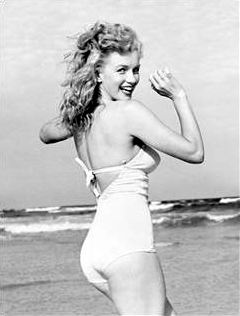In "Let America Be America Again" Hughes discussed that the America dream has disappeared. The America that was living in was not the America that him and his anc

estors came to. He entered this country with high hopes. He thought of America as a place where "opportunity is real, and life is free
" a place where "Equality is in the air we breathe". He found out that these things do not exist. Hughes wants "America [to] be America again", he wants the people "whose sweat and blood, whose faith and pain" made this country to be free again and for their "mighty dreams" to be restored.
In "Open Letter to the South" Hughes proposed that blacks and the working class white men unite because they are essentially equals. I think he was right, the population was composed of primarily the working class, who like blacks were treated unfairly at the time. If these two social groups could have united against the rich white population they could have had a strong union and gained their rights back.


 When doing research for this assignment I used the library here at hcc for the first time. In the past most of my research has been done online and this is the first assignment that I actually had to go into the library and find books and journals relating to my topic. I chose to write about a topic that I was interested in because I knew it would help me write 8 pages, and I enjoyed the research process more.
When doing research for this assignment I used the library here at hcc for the first time. In the past most of my research has been done online and this is the first assignment that I actually had to go into the library and find books and journals relating to my topic. I chose to write about a topic that I was interested in because I knew it would help me write 8 pages, and I enjoyed the research process more. graph I did not get a clear idea of what their thesis is. What I did like about this paper was at the end the author mentions critics that she does not agree with and does a good job of arguing against them. When writing persuasive paper I always have trouble making the reader think what I am thinking and not discredit my argument.
graph I did not get a clear idea of what their thesis is. What I did like about this paper was at the end the author mentions critics that she does not agree with and does a good job of arguing against them. When writing persuasive paper I always have trouble making the reader think what I am thinking and not discredit my argument. At the end of the story she is so sleep deprived that she strangles the crying baby she is supposed to look after. At first I thought she killed the baby because she was so tired she started to go crazy and lashed out on the child. But after I thought about it I thought that maybe killing the baby was a kind of rebellious act because she had so many strict rules and restrictions placed on her by the family she works for. Or maybe she is envious of the baby because it gets to sleep and she doesn't. Also, since she is so young she might feel that she has had her childhood taken away from her by the family she is working for, so she might have killed the child out of spite or revenge to get back at the family.
At the end of the story she is so sleep deprived that she strangles the crying baby she is supposed to look after. At first I thought she killed the baby because she was so tired she started to go crazy and lashed out on the child. But after I thought about it I thought that maybe killing the baby was a kind of rebellious act because she had so many strict rules and restrictions placed on her by the family she works for. Or maybe she is envious of the baby because it gets to sleep and she doesn't. Also, since she is so young she might feel that she has had her childhood taken away from her by the family she is working for, so she might have killed the child out of spite or revenge to get back at the family.
 At first the hardest part of the literary analysis was comming up with a thesis and ways to support it using the text. As I was writing my paper I found it difficult to stay focused on my thesis, I often found myself going off on tangents. It was also challenging to explain the claims I made fully in detail and relate it back to my thesis.
At first the hardest part of the literary analysis was comming up with a thesis and ways to support it using the text. As I was writing my paper I found it difficult to stay focused on my thesis, I often found myself going off on tangents. It was also challenging to explain the claims I made fully in detail and relate it back to my thesis.


